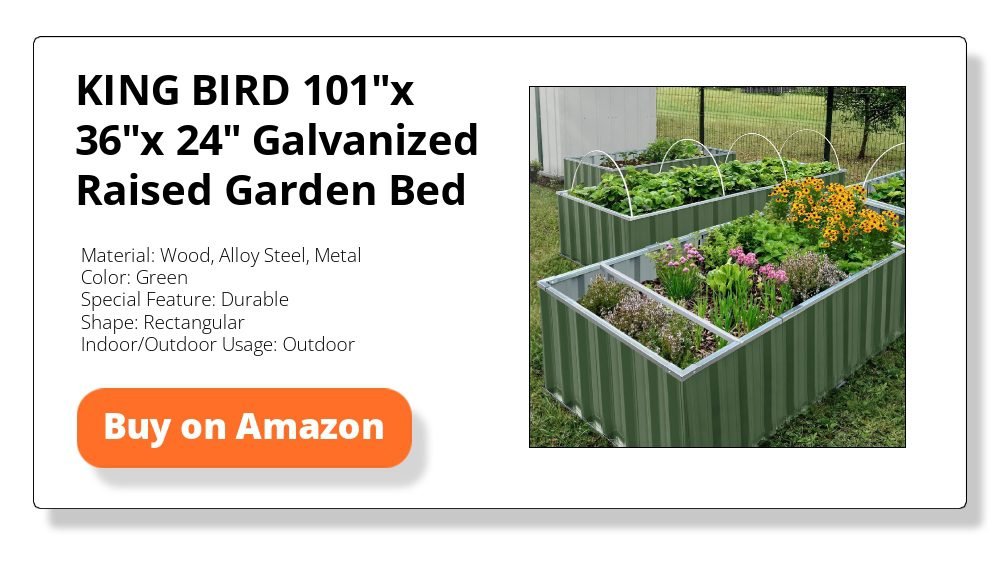Introduction
Galvanized garden beds have become a popular choice for gardeners seeking durable, low-maintenance planting solutions. But how long can you expect these beds to last? Understanding the galvanized garden beds lifespan is crucial for making informed decisions about your gardening investments. This article dives deep into the factors that affect their durability, maintenance tips to extend their life, and comparisons with other materials.
Whether you’re a seasoned gardener or a beginner, knowing the lifespan of galvanized garden beds helps you plan your garden effectively and avoid costly replacements. We’ll explore real-world examples, expert advice, and actionable tips to maximize the longevity of your galvanized garden beds.
Understanding Galvanized Garden Beds Lifespan
What Is Galvanization and Why Does It Matter?
Galvanization involves coating steel or iron with a layer of zinc to protect it from rust and corrosion. This process significantly enhances the metal’s resistance to outdoor elements such as moisture, soil acidity, and temperature fluctuations—common challenges in garden environments.
The zinc layer acts as a sacrificial barrier, meaning it corrodes before the steel does, extending the garden bed’s structural integrity. The quality and thickness of this zinc coating directly impact the galvanized garden beds lifespan.
Typical Lifespan of Galvanized Garden Beds
On average, galvanized garden beds can last between 15 to 30 years depending on environmental conditions and maintenance. In mild climates with moderate humidity, expect the higher end of this range. However, in areas with heavy rainfall, salty air, or acidic soils, lifespan may be on the shorter side.
Key factors influencing lifespan include:
- Thickness of the galvanization
- Exposure to harsh weather or chemicals
- Soil type and moisture levels
- Maintenance routines
Signs Your Galvanized Garden Bed May Need Replacement
Monitoring your galvanized beds for wear can prevent sudden failures. Look for:
- Visible rust spots or pitting
- Warping or structural weakening
- Flaking or peeling of the zinc coating
- Soil contamination from rust particles
Early detection allows for repairs or protective treatments to extend lifespan further.
Factors Affecting the Durability of Galvanized Garden Beds
Environmental Conditions
Harsh weather such as heavy rain, snow, or salty coastal air accelerates corrosion even on galvanized metal. Acidic soils can also degrade the zinc layer more rapidly. Gardens in these conditions require more vigilant maintenance and potentially thicker galvanization.
Quality of Materials and Manufacturing
Not all galvanized garden beds are created equal. Higher-quality beds use thicker steel and apply a more robust zinc coating, sometimes with additional protective layers. Researching manufacturers and looking for certifications can help ensure you invest in durable products.
Maintenance Practices to Extend Lifespan
Proper care can add years to your galvanized garden beds’ lifespan. Consider these tips:
- Keep beds clean and dry: Remove debris and dry off standing water to prevent moisture buildup.
- Apply protective coatings: Use zinc-rich paints or sealants designed for galvanized metal.
- Avoid harsh chemicals: Fertilizers or pesticides containing acids or salts can damage the coating.
- Inspect regularly: Early rust spots can often be sanded and recoated before spreading.
Installation and Design Considerations
Elevating beds for better drainage and avoiding direct soil contact with untreated metal edges reduces corrosion risk. Using liners inside beds can also protect the metal from acidic or damp soil conditions.
Comparing Galvanized Garden Beds to Other Materials
Galvanized Steel vs. Wood
- Durability: Galvanized steel outlasts wood, which typically lasts 5-10 years before rotting.
- Maintenance: Steel requires less frequent maintenance but needs rust prevention; wood needs sealing and may attract pests.
- Cost: Steel beds often have higher upfront costs but save money long-term due to longevity.
Galvanized Steel vs. Plastic or Composite Beds
- Strength: Steel is sturdier and supports heavier soils.
- Environmental impact: Steel is recyclable; plastic may degrade or leach chemicals.
- Aesthetic: Plastic offers more color options but may fade; steel has a classic industrial look.
Expert Quote
According to horticulturist Dr. Lena Harris, “Galvanized garden beds are an excellent investment for gardeners who want durability and minimal upkeep. Proper installation and maintenance can easily push their lifespan beyond two decades, making them a sustainable choice.”
Practical Tips to Maximize Your Galvanized Garden Beds Lifespan
- Choose high-quality galvanized steel beds with a thick zinc coating (at least 2-3 mils).
- Install beds on well-draining soil or add gravel layers underneath.
- Apply a clear zinc-rich sealant every few years to reinforce protection.
- Use garden liners to separate soil from metal surfaces.
- Avoid placing beds in direct contact with lawn sprinklers or fertilizers that contain corrosive chemicals.
- Regularly clean and inspect beds for early signs of rust.
- Consider repainting or touching up exposed galvanized areas to prevent corrosion from spreading.
Conclusion
The galvanized garden beds lifespan typically ranges from 15 to 30 years, influenced by factors like environmental conditions, material quality, and maintenance. By understanding how galvanization protects metal and implementing practical care strategies, gardeners can significantly extend the life of their beds.
Choosing galvanized steel beds offers a durable, low-maintenance solution compared to wood or plastic alternatives. With proper installation, regular upkeep, and protective treatments, these beds can serve your garden reliably for decades.
Reflecting on your garden’s specific needs and conditions will guide you in selecting the best materials and care routines. Consider galvanized garden beds as a long-term investment that blends strength, sustainability, and style for your outdoor space.
